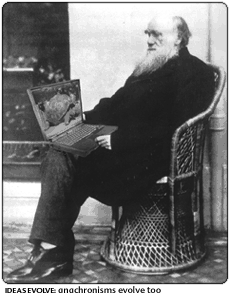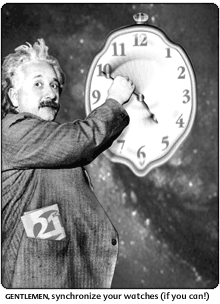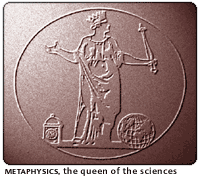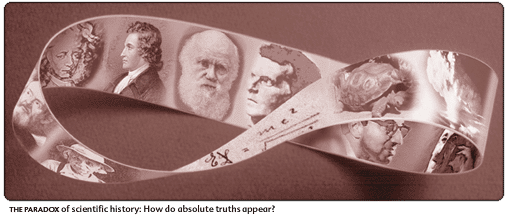an objectivity have a history? A history is, by definition, a story of change the object of a
historical investigation was once one thing, then time passed and it looked different. Objectivity this
idea of "things in themselves" would seem to float, fixed and eternal, above the shifting sands of
historical change.
The puzzle can be extended: If science is anything, it is a kind of knowledge that claims to be
universal and timeless; if history is anything, it is a kind of knowledge that specifies the uniqueness of
particular times and particular places. Viewed this way, scientific knowledge is distinguished
precisely by having transcended local conditions. Maybe past mistakes in science (say, an
Earth-centered universe) can be explained by reference to a smattering of historical facts (religious
ideas of the time, reliance on classical sources), but history alone can not explain the right answer.
This answer, we assume, just is. Eventually someone notices. History and science, from this
perspective, would seem to be diametrically opposed.
Sound tricky? The conundrum is dear to the heart of those who pursue the history of science, a
dynamic field that seeks to understand how science has become such a powerful way of making sense
of the world. While Lorraine
Daston, Robert
Richards, and Peter Galison
each explore different episodes in that history, they share a taste for the philosophical questions that
hover around the study of science and society. When these scholars met at Columbia1 to present papers exemplifying research in this field, they took
listeners through the 18th, 19th, and 20th centuries, shedding light on figures already luminary in the
pantheon of science: Goethe, Darwin, Einstein. But the diversity of the topics always
orbited around that massive question: How best to do the history of science? It is a question with deep
roots on the Columbia campus, which has been home to a number of the greatest scholars in the
field: from Lynn Thorndike, whose
work shaped our understanding of medieval magic and science, to Robert Merton, whose
sociological investigations of the rise of scientific method and practice continue to influence all those
who try to understand where science came from and how it works.
The science of colors: truth and objectivity
Lorraine Daston not only posed that
hard question as her title ("Can Objectivity Have a History?") but answered it in the affirmative. Her
argument challenged the assumption that objectivity is a transcendent intellectual virtue:
self-generating, eternal, a veritable "category of thought." Objectivity itself, she set out to show, is
better understood as a creature of the sublunary flexible, subject to change not as an allegorical figure
cast in stone, standing in our cultural pantheon among symbols of divine knowledge.2
For starters, Daston showed that the word itself has a history. Remarkably, it once meant almost the
exact opposite of what it means now: We think of objective meaning "out there in the
world" while subjective means "in the mind," but from the 12th century to the
Enlightenment objective meant something like "an object of thought" while
subjective meant "existing as a subject; existing in itself."
There is more to the story than a mere shift in terminology. For Daston, the codification of the term's
meaning in the early 19th century marks an epistemic shift, a shift in techniques for seeking
knowledge. Whereas earlier investigators had thought of themselves pursuing truth and trying to
avoid (or explain away) illusions, later ones understood themselves to be investigating a world that
could be resolved into two kinds of phenomena: objective and subjective. These were not just new
words for the same "truth" and "illusion" categories; these were new categories. Adopting the new
paradigm had real implications for how you did science.
As an example, Daston described the different ways that investigators explored the science of colors
before and after this miniature revolution. If you thought in terms of truth vs. illusion, it would never
occur to you to investigate the particularities of individual seeing beings -- I see blue, you see green.
Instead, one tried to formulate color laws that were universal; the idea that the differences among
people's perceptions of color could itself be interesting to study never came up. Such
differences had to be explained away as illusions.
Those who worked in the objective-vs.-subjective framework thus found new things to be
investigated, among them, these variable impressions and the human beings experiencing them. A
new problem arose: How to map the distance between the subjective and the objective. This meant
trying, perversely, to see the subjective objectively: to graph this person's physiological
response, to experiment on one's own experience of perception. One of Daston's most
remarkable examples described a Czech scientist in the early 19th century who tried to train himself
to see objectively; he wanted to perceive the images made by his eyes without any of the filters of his
culture or education. He was trying to learn to see like an animal, or (as he put it) like a primitive
man.
It is a somewhat nutty idea, but it tells us a great deal about the 19th century. It suggests, perhaps,
why people found the idea of the sublime so exhilarating, as such experiences transcended the
subject/object divide; it helps explain why really nasty self-experimentation (shocking sensitive
organs, swilling down poisons and infectious material) was so important in the same period; it may
cast light on that century's best-known objective science of subjectivity, Freudian psychoanalysis.
Critically, Daston's story has a message for practicing scientists. Within this thing we all call science,
there are multiple aims for knowing: truth, objectivity, mathematical deep structures, theoretical
elegance. Most of the time these blur together for us, but a more detailed look can tease out how
these projects can sometimes differ. Daston suggested that some of the recent high-publicity cases of
alleged scientific fraud might be better understood as conflicts that have resulted from insufficient
attention to the multiple (legitimate) aims for knowledge that we sweep together in the catch-all term
science . In sum, Daston showed that conceiving of scientific inquiry  as monolithic not only
clouds our historical view but risks impoverishing the intellectual enterprise we call science.
as monolithic not only
clouds our historical view but risks impoverishing the intellectual enterprise we call science.
The Origin of Species is not Bio 101
The word for what Daston warns
against is anachronism , the name for a number of sins against time, the most deadly of
which is assuming the past was just like the present. Anachronistic accounts erase historical
difference. The result is a muddle. It is precisely this sort of muddle that Robert Richards tried to
clear up in his paper, which argued that modern biologists have had a tendency to read too much of
modern biology into the work of Charles Darwin.
For Richards, the challenge for the historian of science is to see Darwin's theory in its "sepia tones,"
no easy task when an author's ideas remain so entangled with current science. A bracing splash of
historical context can help. By situating Darwin in the world of Romanticism, by detailing his
fascination with the Prussian explorer-naturalist Alexander von Humboldt, by
excavating the purposeful, intelligent, and even moral character of Darwin's conceptions of natural
selection, evolution, and nature itself, Richards gave the audience a new picture of the most
celebrated scientist of the last century. This was not the Darwin some commentators have tried to
paint: a tedious empiricist seeking to suck the soul out of nature. In fact Darwin's "nature" is
emphatically not the amoral, unanimated, random mechanism of the modern evolutionary biologist.
Richards successfully countered an unfortunate tendency to treat The Origin of
Species as if it were basically the same as Biology 101.
Richards went after the big question too: How do you do the history (contingent, local) of science,
which defines itself by claiming to be necessary and universal? In hazarding an answer he pointed to
the middle ground: an approach that would take seriously both transhistorical truths and historical
contingency. He admitted that this was never easy.
So true. Having taught Darwin myself, Richards' talk reminded me of a comment in a student paper I
received several years ago. After I had energetically laid out how Romanticism worked in the
Origin, I went home to grade the essays and discovered this thoughtful little barb:
"When I hear about metaphors, about travel writing, about Romanticism in this class, I feel as
if the professor is picking small, bright flowers and showing them to us, as a mammoth diesel
locomotive thunders by behind him..."
Her point, of course, was this: What
about the staggering magnitude of what Darwin appears to have "gotten right" about nature? What
does that have to do with Romanticism?
Tough question. Richards' talk suggested he might accept a version of the answer I tried to give then.
Of the relation between Darwin and modern biology, Richards has written: "that the offspring should
look like the parent is not strikingly unusual." Indeed. What if we take this biological metaphor a step
further? Darwin taught us to think of a living organism in two ways simultaneously: first, as a
working solution to a particular problem of existence (surviving in this place in the economy of
nature), but also as a text overwritten with its own evolutionary history. Let us, for a moment, turn
the model on itself: What if we work to understand Darwin's theory both as a successful solution to a
particular kind of problem account for the patterns of taxonomy, biogeography, embryology, and the
like while never losing sight of that solution as a tissue of its own history, marked, as it were, by the
vestiges of its own past states? Modern scientific theories never escape their histories, but this need
not imply that the theories are wrong.
Einstein in the Patent Office
Few scientists have the cultural significance of Einstein, whose fuzzy-headed image has become a
symbol of a mind working in ethereal realms far beyond the hum-drum of daily life. So radical were
his insights into the relativity of space-time that they seem plucked from another universe. In an
 exhilarating paper, Peter Galison showed that this most otherworldly of ideas can not be separated
from a set of thoroughly worldly concerns.
exhilarating paper, Peter Galison showed that this most otherworldly of ideas can not be separated
from a set of thoroughly worldly concerns.
At the crux of Einstein's most famous paper lies the realization that there is no way to establish the
simultaneity of two distant events without taking into account the time that it takes information about
the events to travel to some timekeeper. Two events might look simultaneous to that figure,
but given that light travels at a finite speed, he might be "seeing" as simultaneous events that
happened at different moments at different distances. This observation set Einstein to thinking about
other techniques for synchronizing times at a distance, investigations that led ultimately to a radical
challenge to conventional ideas about space and time.
In a paper that had, at times, the spirit of an unfolding mystery, Galison showed that Einstein's
extraordinary clock problem bore an uncanny resemblance to a very practical set of clock problems
raised by the need to synchronize railway timetables and a host of other urban, national, and
international time systems. The problem of distant simultaneity was on the minds of a great number
of European politicians, military leaders, and inventors at the turn of the century. Moreover, a fair
number of patent applications designs for webs of mutually regulating clocks had to pass through the
Bern patent office, where they
were reviewed by a second-class patent clerk named Albert Einstein.
One must not oversimplify. Galison's paper did not at all try to diminish Einstein's discovery or
suggest that Einstein had his "Eureka" walking under the synchronized clocks he passed on the way
to work. Rather, the point is to show that the fanciest theories and the most mundane technological
artifacts are interconnected. If some would like to tell the history of science as a history of
disembodied ideas (gravity, relativity), and others would like to tell the same history by focusing on
instruments and technology, Galison declares a pox on both houses. We must, he advised, "reduce
the untenable either/or of things and thoughts."
Science: in history or beyond?
Facing the challenges posed by the history of science, the symposium participants suggested (and
exemplified) different approaches. Daston pulled "objectivity" from the pantheon of the timeless,
 unmoving verities, but she never claimed that this pantheon was somehow empty, only that we ought
to be careful when we kneel at the portal. Richards counseled the historian of science to seek some
middle ground between taking scientific claims at face value and reducing science to some contest of
egos, wills, or interests. At the appropriate midpoint we gain a unique vantage point from which to
survey how some individuals and communities come to claim a special relation to the really real and
succeed in being believed. Finally, Galison, in a felicitous astrological metaphor, urged us to "look up
to see down, and down to see up." The metaphysical heavens will be reflected in the historical and
technical minutiae, and vice versa. The task of the historian of science becomes this: to stage an
enlightening dialogue between improbably distant but sympathetically orbiting realms.
unmoving verities, but she never claimed that this pantheon was somehow empty, only that we ought
to be careful when we kneel at the portal. Richards counseled the historian of science to seek some
middle ground between taking scientific claims at face value and reducing science to some contest of
egos, wills, or interests. At the appropriate midpoint we gain a unique vantage point from which to
survey how some individuals and communities come to claim a special relation to the really real and
succeed in being believed. Finally, Galison, in a felicitous astrological metaphor, urged us to "look up
to see down, and down to see up." The metaphysical heavens will be reflected in the historical and
technical minutiae, and vice versa. The task of the historian of science becomes this: to stage an
enlightening dialogue between improbably distant but sympathetically orbiting realms.
Where do these methods leave the historian of science in relation to the pursuit of the sciences
proper? Here, as another scholar in the field, I speak for myself. To the degree that the ideal of
scientific knowledge remains a peculiar fantasy of the world as it would be, somehow, without us to
the degree that it remains a dream of transcendence to that degree the historian of science (who
continually returns to the human in science) must remain a kind of gadfly, thrumming in the
pantheon, reminding us that we cannot ever erase ourselves.
"We find metaphysics in machines and machines in metaphysics," Galison concluded, and I was
reminded of the image of Metaphysics, "the queen of the sciences," in Jean Baudoin's icon book of
1644. She is depicted poised between a table-clock and a globe, those powerful tools for
thinking about time and space. Is she transcending them, or is she stuck between them? The image
flip-flops for me. At one moment I see her as inextricable from these technical artifacts, inseparable
from local places and specific moments. The next moment she seems the immortal figure of allegory
with whom Daston began: a figure who transcends space and time, who does not come into being
and who does not pass away.
1. Robert Richards, "Scientific Transcendence and Historical Reality: The Case of Darwin's
Romantic Biology"; Lorraine Daston, "Can Objectivity Have a History?"; and Peter Galison,
"Einstein's Clocks: The Place of Time," presented at the symposium "Nature/History: Thinking
about History and Knowledge of the Natural World," April 7, 1999, at Columbia's Italian Academy . The original talks and
commentary in RealAudio are available online. 2.
The "sublunary" means literally the "region below the moon." Aristotle thought that the orbit of the
moon traced a dividing line in the universe: below, all was corruptible, subject to change; above, all
was eternal, pure, unchanging.
Related links...
Columbia University Seminar
on the History and Philosophy of Science
Press release for the
"Nature and History" conference
D. GRAHAM
BURNETT, Ph.D., recently a
Mellon Fellow in History and member of the Society of Fellows in the Humanities at Columbia
University, is currently in residence at the Center for Scholars
and Writers at the New York Public Library. In addition to his academic writing he has
published in The Economist, The American Scholar, and The New
Republic. He organized the History of Science Symposium.
| Photo Credits |
Möbius Strip: Photo Jonathan Smith / Computer Illo Howard R. Roberts
Darwin: Photo AP/Wide World Photos / Computer Effects Howard R. Roberts
Einstein: Photo AP/Wide World Photos / Computer Effects Howard R. Roberts
Queen of the sciences: Adapted from Cesare Ripa / Iconologie/ (Paris: Guillemot, 1644)
|





 as monolithic not only
clouds our historical view but risks impoverishing the intellectual enterprise we call science.
as monolithic not only
clouds our historical view but risks impoverishing the intellectual enterprise we call science. exhilarating paper, Peter Galison showed that this most otherworldly of ideas can not be separated
from a set of thoroughly worldly concerns.
exhilarating paper, Peter Galison showed that this most otherworldly of ideas can not be separated
from a set of thoroughly worldly concerns. unmoving verities, but she never claimed that this pantheon was somehow empty, only that we ought
to be careful when we kneel at the portal. Richards counseled the historian of science to seek some
middle ground between taking scientific claims at face value and reducing science to some contest of
egos, wills, or interests. At the appropriate midpoint we gain a unique vantage point from which to
survey how some individuals and communities come to claim a special relation to the really real and
succeed in being believed. Finally, Galison, in a felicitous astrological metaphor, urged us to "look up
to see down, and down to see up." The metaphysical heavens will be reflected in the historical and
technical minutiae, and vice versa. The task of the historian of science becomes this: to stage an
enlightening dialogue between improbably distant but sympathetically orbiting realms.
unmoving verities, but she never claimed that this pantheon was somehow empty, only that we ought
to be careful when we kneel at the portal. Richards counseled the historian of science to seek some
middle ground between taking scientific claims at face value and reducing science to some contest of
egos, wills, or interests. At the appropriate midpoint we gain a unique vantage point from which to
survey how some individuals and communities come to claim a special relation to the really real and
succeed in being believed. Finally, Galison, in a felicitous astrological metaphor, urged us to "look up
to see down, and down to see up." The metaphysical heavens will be reflected in the historical and
technical minutiae, and vice versa. The task of the historian of science becomes this: to stage an
enlightening dialogue between improbably distant but sympathetically orbiting realms.




